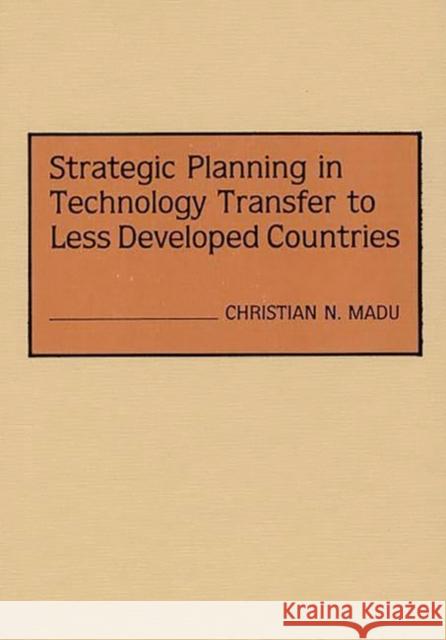Strategic Planning in Technology Transfer to Less Developed Countries » książka
Strategic Planning in Technology Transfer to Less Developed Countries
ISBN-13: 9780899306292 / Angielski / Twarda / 1992 / 224 str.
Despite an avalanche of literature over the last 30 years there has been relatively little written on the role played by strategic planning in the transfer of technology, particularly from developed to less developed countries. Technology transfer, which involves the acquisition of inventive activity by secondary users, is conceded vital to socio-economic growth, but usually it is looked at internationally from a micro perspective. Unlike other books, Madu's volume looks at technology transfer holistically. It examines the advantages of technology transfer and its limitations by viewing recipient nations as systems, in which social, economic, behavioral, and political influences converge to help shape technological decisions. Only when a systems perspective like this is adopted and technology seen as a strategic variable can technology transfer be understood and successfully implemented, says Madu.
Madu thus identifies the failures of technology transfer as the result of malfunctions in three components of the system: technology, structure, and behavior. He analyzes these malfunctions, offers ways to repair them, and considers technology from the viewpoints of both transferrer and receiver, whose missions, goals, and objectives are often not only disparate but sometimes in conflict. He then offers what he calls prescriptive frameworks and guidelines to help implement transfer, and to see it as a variable that must be integrated into national development planning. Throughout, Madu makes it clear that the objective of technology transfer is the maximizing of social welfare. Using this overarching premise he is able to evaluate both the benefits and the social costs associated with technology transfer and to develop his prescriptive, integrative models. Intended for specialists in international finance and development and international business management, Madu's book will be of special value to teachers of graduate courses in socio-economic development, public policy, and economics, and to policymakers throughout government.











